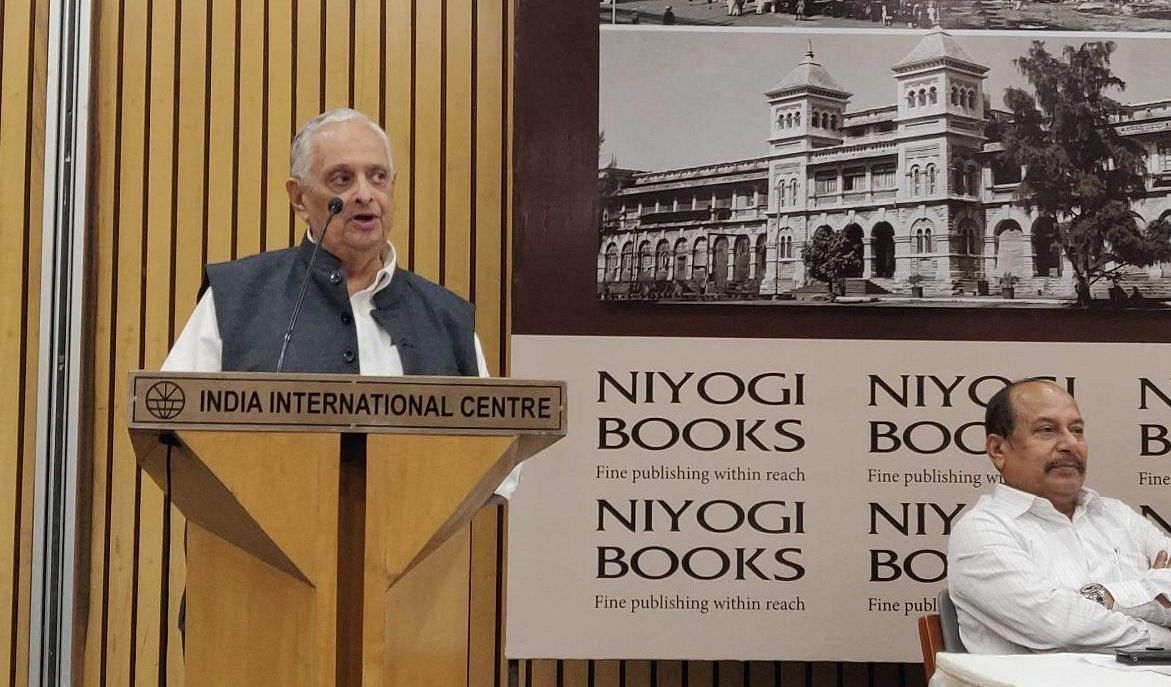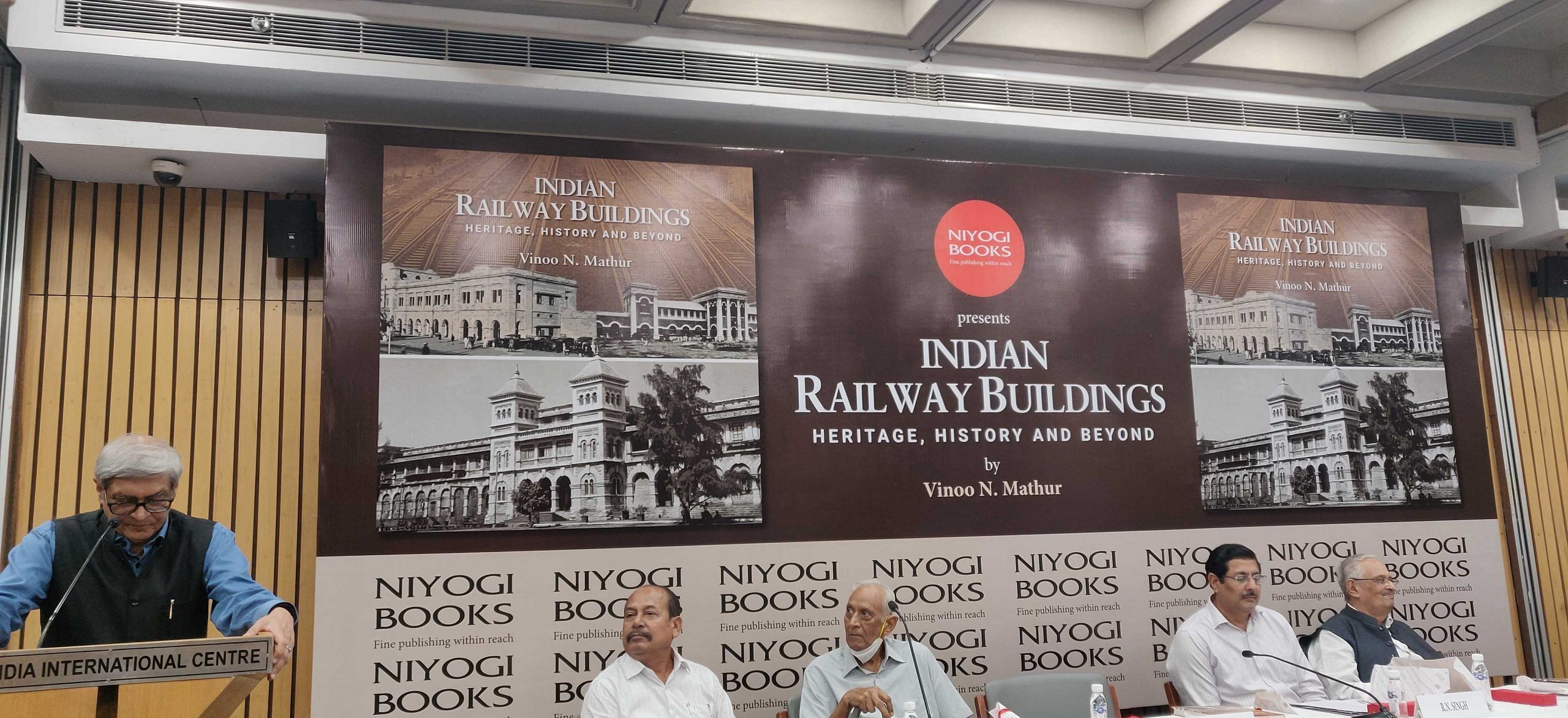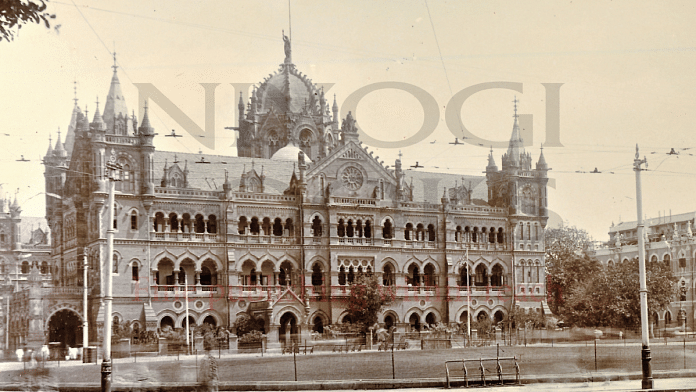The release event of the coffee table book called Indian Railway buildings: Heritage, History and Beyond by Vinoo Mathur was bound to be steeped in nostalgia.
And public commentator and former NITI Aayog Vice-Chairman Bibek Debroy painted his nostalgia on the evening canvas with a broad brush.
Recounting his quintessential Indian Railways experience, Debroy spoke of the steam engines, hot steamy trains before air conditioning, sticking your neck out of the window and getting soot in the hair. Then he paused and uttered the sad truth.
“But the young do not identify with the railways today,” he said and the hall full of rail enthusiasts let out a collective sigh. “Any book on railways should appeal to young readers, not just the gerontocracy that is assembled here.”
That was the challenge for former Member Traffic on the Railway Board Vinoo N. Mathur’s book, which took 10 years in the making. It is a tour de force of the history and the architectural styles of railway buildings from the mid-19th century to the early 20th century. Published by Niyogi Books, it is a deeply researched book with accessible writing. Many speakers at the release event used the phrase ‘labour of love’ for Mathur’s work.

“All the three UNESCO world heritage sites belonging to the colonial period are related to railway history. That is a rare distinction,” Mathur said. He worked on getting the UNESCO tag for Chhatrapati Shivaji station in Mumbai.
Also read: Arab Spring or Islamic winter? KP Fabian’s new ‘was and wasn’t’ book answers this question
Railway station architecture
Rich with archival photographs, historical anecdotes and design analysis, Mathur doesn’t just limit his book to railway stations. The chapters in the book include diverse styles followed by individual rail companies, profiles of architects (Walter Granville), railway bungalows, railway gymkhanas (Jamalpur Gymkhana) and training institutes in Dehradun and Asansol.
He spoke of how the Chhatrapati Shivaji station (Victoria Terminus) in Mumbai and the Eastern Railway Headquarters sport an architectural style with distinguished cornice and domes that were modelled on Michelangelo’s work.
Over the course of a century, Mathur said, the styles ranged from a revival of the ancient classical style with Romanesque domes and arcades to the revival of Victorian Gothic style of vertical, cloud-kissing tall spires to the Indo-Saracenic (with jharokhas, canopies and screens) to austere blank facades and row windows.
The future of railway station architecture, however, is going to be very different. Mathur said they will look more and more like airports with the glass and steel look. This is already visible in the Rani Kamlapati station near Bhopal.
Also read: ‘Ghar ka khana’ to delivery apps — Indian food is changing, but you can’t blame women
Repository of railway history
The most frequent questions about Indian Railways are asked on Kaun Banega Crorepati and UPSC exams—when and where the first commercial train ran in India. In 1853, and from Boribunder to Thane.

“But nobody knows the names of the three locos on that route that day,” Debroy said. “Sultan, Sindh and Sahib were their names. Where are they today? Nobody knows. Probably lost or sold as scrap.”
Railway heritage is not just restricted to station buildings, but also includes bridges, tracks, signalling equipment, old timetables, tickets and intangible history. The Delhi-based National Rail Museum has been the repository of many of these historical artefacts, including the princely salons, armoured coaches, lights and station objects. It’s a mandatory visit for every child raised in Delhi schools. And many children remember only one thing from the two-hour visit – the eight-minute joy train ride.
To address this problem, ahead of the 2010 Commonwealth Games, I worked with the museum to train the first batch of students to be docents and give guided walks for international visitors. I wove many of the intangible histories into their tour.
Vinoo Mathur had been working on his book since then.
Debroy quipped that railway books are usually written by zone officers where “the photographs are wonderful but the text is boring. Railway officers are better writers when they retire.”
Also read: Panelists exit JLF New York, BJP’s Shazia Ilmi says ‘cancel cancel-culture’
Nothing has changed
Then there was the story of the architect Robert Fellowes Chisholm who built the Trivandrum and Madras railway stations. He wasn’t a railway man and initially, Chisholm was given peripheral work at the station but later it turned out that he was designing and building the entire station in Chennai.
Mathur said that the standard fee for architects in those days was 7 per cent of the cost of the building. In his research of the correspondence between Chisholm and the railways at the Chennai Archives, Mathur found that the architect was initially promised 1.5 per cent only. He pushed back and asked for 5 per cent of the building’s cost. There was a lot of back and forth between the two. The railways never paid him what he asked for.
“The Railways was cussed back then, and it is cussed today,” Mathur laughed.
(Edited by Ratan Priya)



